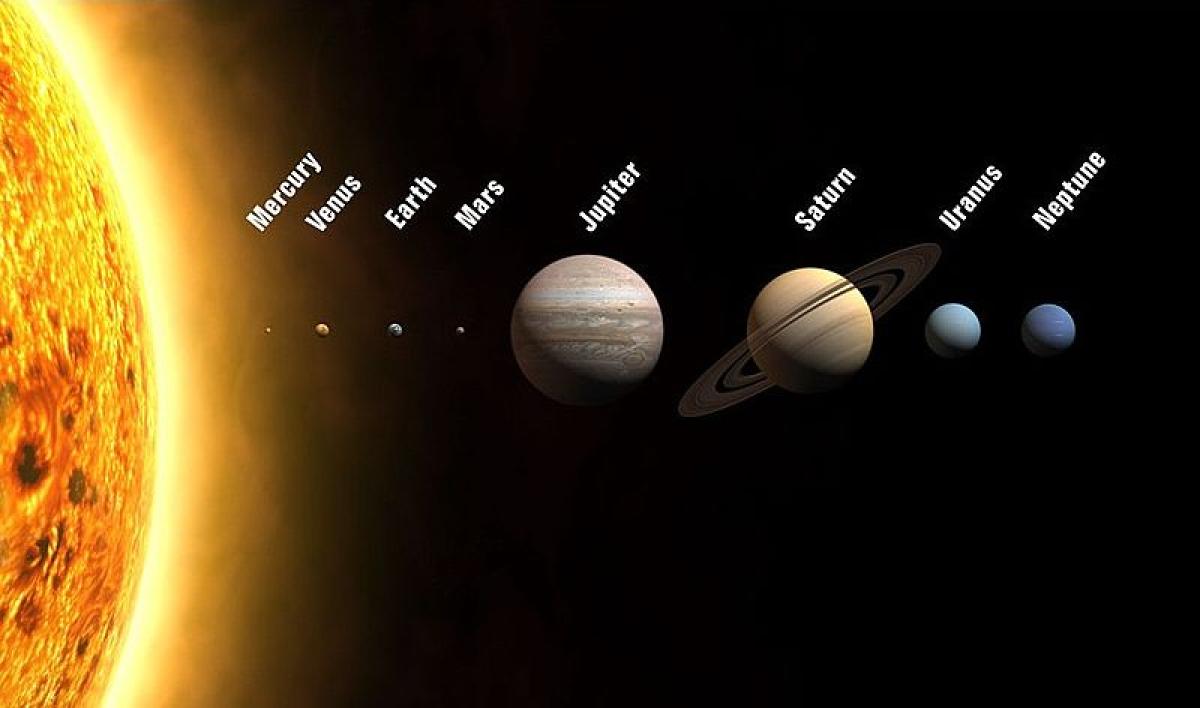Our Solar System contains the Sun, 8 planets, and lots of smaller objects. It formed 4,500 million years ago. It is on an outer spiral arm of the Milky Way galaxy.
The 4 planets closest to the Sun are the inner or terrestrial planets. They are small, warm, rocky worlds, with few (or no) moons and no rings. They are: Mercury, Venus, Earth, and Mars. Venus, Earth, and Mars all have atmospheres and weather.

The 4 outer planets are larger and cooler. They contain gases (plus ices). Together they contain 99% of the mass that orbits the Sun. They are often called giant planets. There are gas giants: Jupiter and Saturn. And ice giants: Uranus and Neptune. The giant planets have a lot of moons, over 200 between them! They also all have rings, although we only see Saturn’s rings from Earth.
Between the inner and outer planets is the asteroid belt. The asteroid belt contains millions of bits of rock. These pieces are leftovers from when the planets were forming. The asteroid belt also contains the dwarf planet, Ceres. If a piece of asteroid travels near to Earth, we call it a Near Earth Object.
The Sun is the centre of our Solar System. Every object in our Solar System orbits the Sun. But they orbit at various speeds. Why not use our Electric Orrery to explore the orbits of planets over time.
Everything in our Solar System is bound to the Sun by its gravity. The Sun's gravity extends out past the 8 planets. Including to the Kuiper Belt beyond Neptune. This is a huge ring of icy and rocky objects. The Kuiper Belt includes dwarf planets. Beyond the Kuiper Belt is the Oort Cloud. The Oort Cloud is too far away and dark for astronomers to observe it. They have used maths to predict its existence. Many comets come from the Oort Cloud.
Distances in the Solar System are huge. Too huge for kilometres or miles to be useful. Instead, we use astronomical unit (AU). One AU is the distance from the Earth to the Sun. It is equal to 150 million kilometres.
- Solar System Formation
The Solar System formed from a huge cloud of gas and dust, which collapsed around 4.6 billion years ago. Clouds are usually triggered to collapse. It is thought that the shock wave from a nearby supernova explosion triggered the Solar System cloud to collapse. The cloud would have been very large and several stars, including our Sun, would have formed from it.
After the cores of the new stars were created, any left over material gathered around them. These spinning clouds of gas and dust are known as proto-planetary discs. The material in these discs goes on to form planets.
Planets form by accretion. This is where dust grains in orbit around the star slam into each other to form clumps. The clumps then collide to form larger and larger objects. The size slowly increases as more dust crashes into them over the next few million years.
The inner Solar System was too warm for lighter elements, like gases, to exist. This meant that the planets which formed there were quite small and made of heavy elements like rock and iron. These became the terrestrial planets - Mercury, Venus, Earth and Mars.
In the outer Solar System it was much cooler, so gases like hydrogen and helium could exist. This meant that large, gas and ice planets could form. These are known today as - Jupiter, Saturn, Uranus and Neptune.
The rest of the material in the disc formed the moons, comets and meteors we see today. The Asteroid Belt, between the planet Mars and Jupiter, contains much of this material. It is thought that a planet was unable to form here because of the strong gravitational pull of Jupiter. Anything left in the disc was blown away by wind from the Sun once it began nuclear fusion.
It is still not known whether all planet systems form in this way, or if the Solar System is unusual.
Image CreditThis work by Hubble Space Telescope is licensed under Creative Commons Zero v1.0 Universal
CreditThis work by Hubble Space Telescope is licensed under Creative Commons Zero v1.0 UniversalDust clouds surrounding new stars
